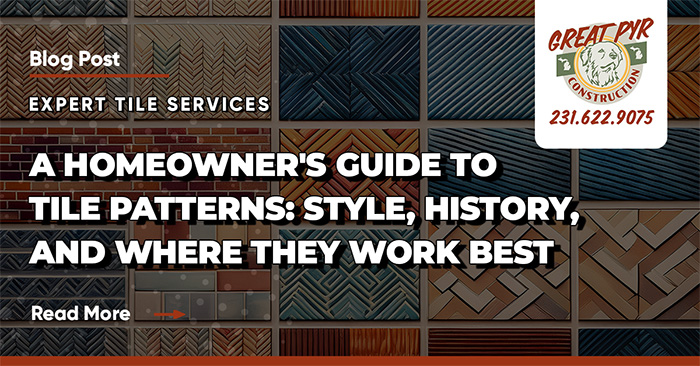Tile patterns are more than just aesthetic choices; they reflect cultural histories and influence the ambiance of a space. From ancient Roman roads to modern luxury homes, the way tiles are arranged can significantly impact the look and feel of a room. Understanding these patterns can help homeowners make informed decisions that blend style, function, and tradition.
Below, we explore ten tile patterns, delving into their historical origins, ideal applications, and design tips to inspire your next home renovation project.
Herringbone Pattern
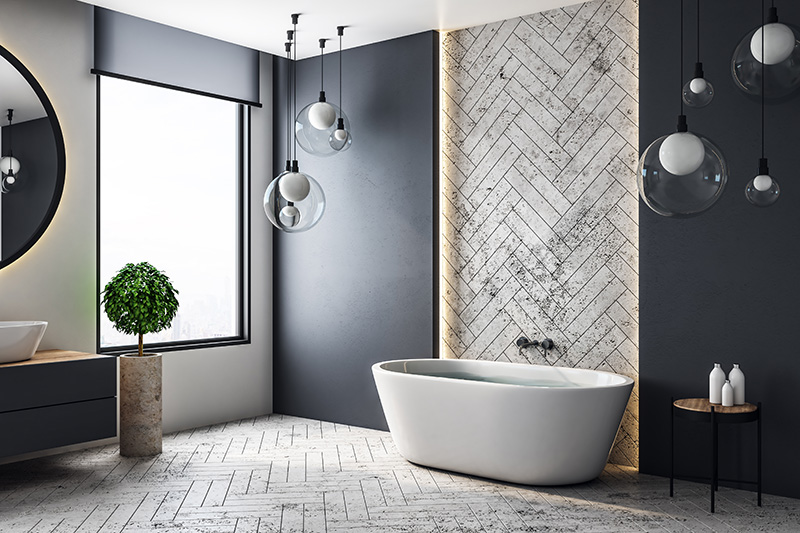
History
The herringbone layout dates back to ancient Rome, where it was used to pave roads and enhance structural stability. Over time, this zigzag motif became a staple in aristocratic homes throughout Europe, symbolizing timeless order and craftsmanship. Today, it’s embraced in both modern and traditional interiors for its dynamic movement and sense of luxury.
Description
This pattern uses rectangular tiles arranged in an interlocking V-shaped layout that mimics the skeleton of a fish. Because the tiles interlace at 45-degree angles, the result is an eye-catching pattern that draws the eye across the floor or up a wall.
Ideal Applications
- Kitchen floors for a sense of energy and flow
- Accent walls in showers or foyers
- Long hallways to visually expand the space
Design Tip
Use long, narrow tiles for a more refined look or go bolder with thick wood-look porcelain. Pair with light grout for subtle elegance or dark grout to emphasize the pattern’s motion.
Chevron Pattern
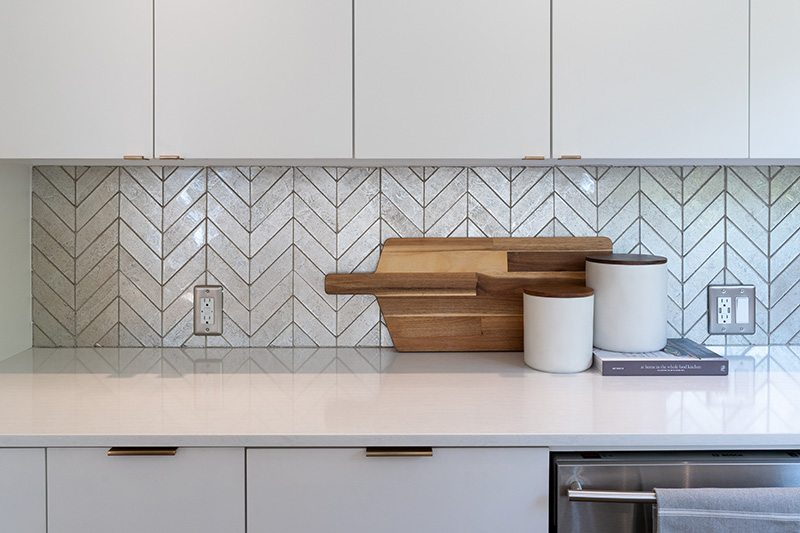
History
The chevron pattern has been used in textiles and wood inlays since the Middle Ages, but its roots reach back to ancient Greece. In modern design, it emerged as a high-fashion tile option in the 20th century, often seen in Parisian apartments and luxury hotels. It remains a symbol of geometric precision and high-end minimalism.
Description
Similar to herringbone, chevron tiles meet in a continuous “V” but require pre-cut angled edges. The result is a seamless zigzag that adds a sense of sophistication and rhythm to any space. It’s an ideal pattern for homeowners wanting a crisp, tailored feel.
Ideal Applications
- Bathroom and shower walls with high-impact drama
- Fireplace surrounds in modern living rooms
- Luxury kitchen backsplashes or wood-look chevron flooring
Design Tip
For a bold contemporary look, try large-format marble or black chevron tiles in a matte finish. Want something subtle? Use tone-on-tone ceramic with minimal grout contrast.
Basketweave Pattern
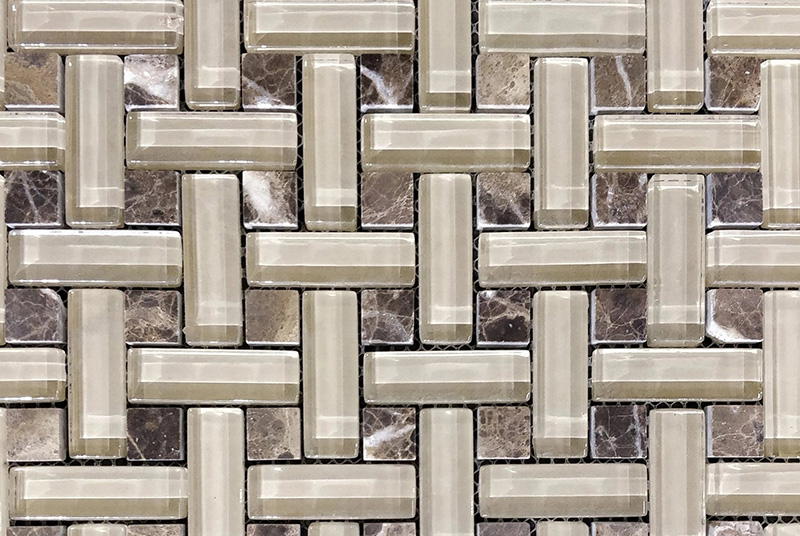
History
The basketweave pattern is inspired by classic weaving techniques and became popular in Victorian-era homes for its timeless appeal. Today, it’s a favorite in vintage renovations and luxury bathrooms where designers want to combine texture, movement, and a handcrafted vibe.
Description
Typically composed of small rectangular and square tiles, the basketweave layout creates a woven appearance that adds texture and complexity without overwhelming the space. It’s often used with marble mosaics or classic black-and-white color schemes for an upscale vintage feel.
Ideal Applications
- Bathroom floors with radiant heat
- Shower floors for added traction and style
- Traditional kitchens with an old-world influence
Design Tip
This pattern pairs beautifully with soft veining and natural stone like Carrara marble. Keep the grout color close to the tile tone for a subtle weave effect, or go bold with contrast to highlight the geometry.
Running Bond (Brick) Pattern
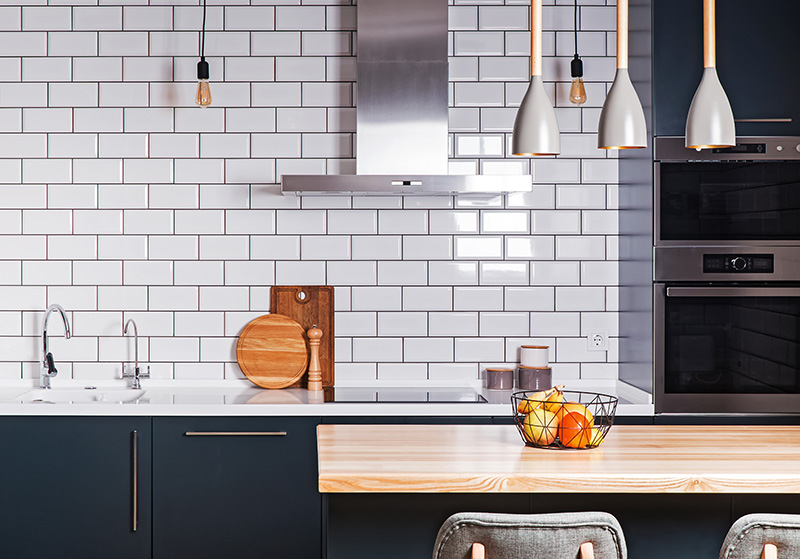
History
Originally a structural solution in bricklaying, the running bond pattern became a design element in mid-century modern and contemporary interiors. It’s loved for its simplicity, efficiency, and ability to minimize visible imperfections in walls or flooring.
Description
This pattern offsets each row of tile by half its width, mimicking traditional brickwork. It’s one of the easiest layouts to install, making it cost-effective and highly adaptable to a variety of materials, from subway tile to natural stone.
Ideal Applications
- Classic subway tile kitchen backsplashes
- Bathroom walls with clean symmetry
- Budget-conscious floors where ease of installation is key
Design Tip
Use high-gloss tiles in white or soft gray for a timeless look. Pair with dark grout for an industrial contrast, or light grout for a subtle, spa-like vibe.
Versailles (Modular) Pattern
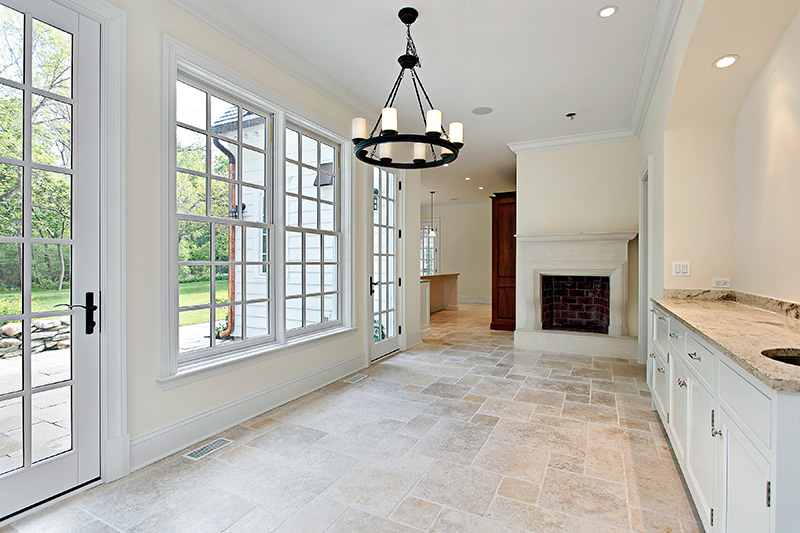
History
The Versailles pattern, also known as the French modular layout, draws inspiration from opulent European estates—most notably the Palace of Versailles. It gained popularity in luxury stone flooring and has become a go-to layout for large-scale installations where elegance and Old World charm are desired.
Description
This intricate layout blends four different tile sizes in a repeating pattern that looks random but is actually carefully designed. It works best with natural stone or travertine and often includes a tumbled or antiqued finish to enhance the traditional aesthetic.
Ideal Applications
- Large-format luxury living rooms or foyers
- Outdoor entertaining spaces or covered patios
- Upscale bathrooms with spa-like features
Design Tip
Because of its size variation, choose a tile collection specifically designed for Versailles layout to ensure perfect modular spacing. Stick to warm neutrals or textured stone for authenticity.
Pinwheel Pattern
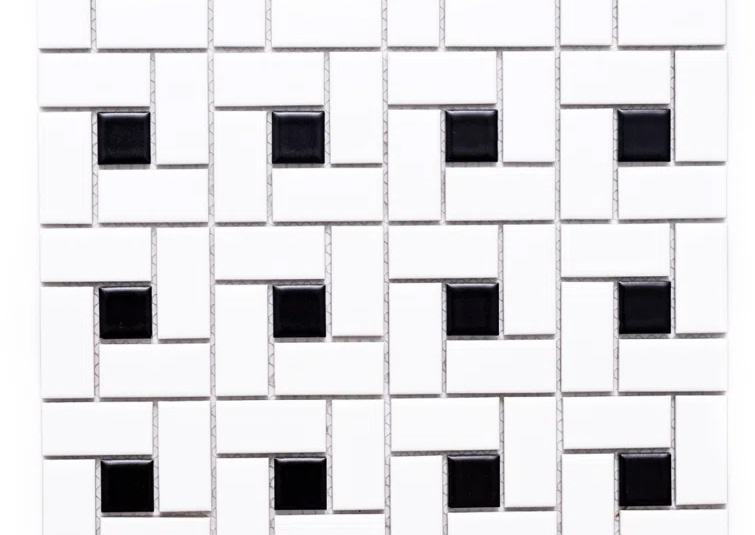
History
The pinwheel layout has been around for decades, particularly in mid-century residential builds. Its popularity stems from its playful movement and ability to create visual energy, especially when used in kitchens and smaller rooms.
Description
This design uses one small square tile surrounded by four larger rectangular tiles, creating a subtle “pinwheel” or spinning effect. Typically done with contrasting colors or materials, this layout feels both geometric and dynamic without being chaotic.
Ideal Applications
- Compact kitchens or galley-style layouts
- Vintage bathroom renovations
- Entryways or laundry rooms needing visual lift
Design Tip
Choose a bold or decorative tile for the central square and let it contrast subtly against a neutral main field tile to make the rotation more noticeable.
Windmill Pattern
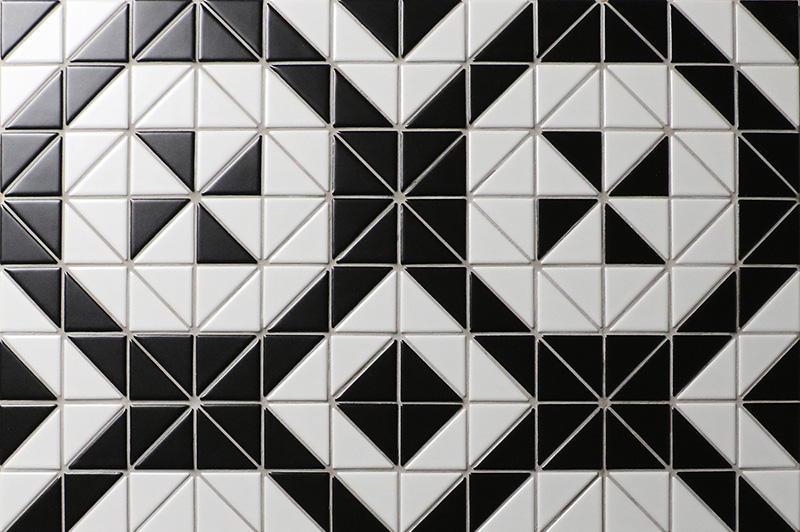
History
The windmill pattern takes its name from the pinwheel-like geometry that resembles the blades of an old-fashioned windmill. It gained traction in the 19th and early 20th centuries and has remained a classic for homes with traditional or transitional aesthetics.
Description
This layout centers a square tile inside a frame of four rectangular tiles, giving a rotational or framed look. Though often confused with the pinwheel, windmill tile has a slightly more symmetrical and boxed structure, making it ideal for grid-like walls or floors.
Ideal Applications
- Shower walls and niches with accent features
- Kitchen backsplashes in traditional or farmhouse homes
- Powder room floors where detail matters
Design Tip
Choose neutral or muted tones to keep this classic layout elegant. Tumbled marble or travertine works especially well in rustic or French country-style interiors.
Diagonal Pattern
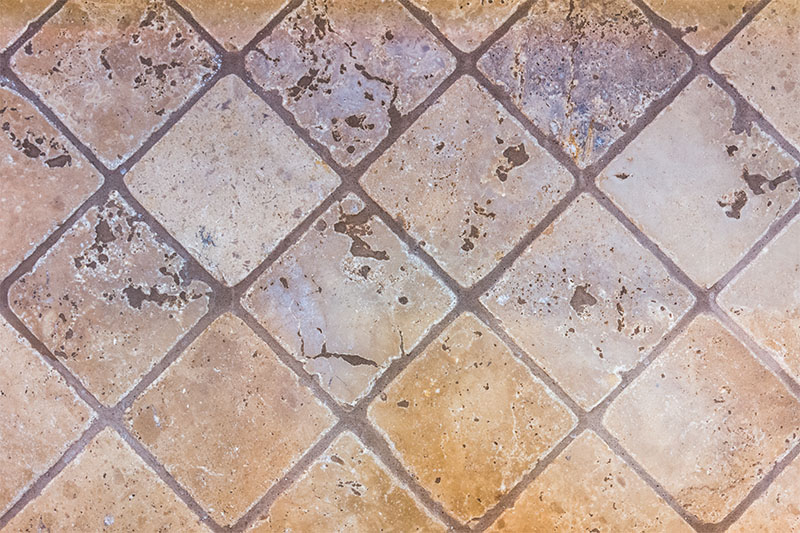
History
Diagonal layouts have been around for centuries in Roman and Spanish mosaics and remain a popular way to make tight interior spaces appear more open and fluid.
Description
Tiles are laid at a 45-degree angle to the walls, forming a diamond pattern. This angular design helps eliminate the “grid-like” appearance that standard square layouts can produce, offering more flow and subtle movement.
Ideal Applications
- Hallways or narrow bathrooms where expansion is desired
- Kitchen floors needing visual width
- Open concept spaces blending with larger tile themes
Design Tip
Pair diagonal layouts with light-colored grout to keep things airy. Be mindful: this layout requires more cuts, so plan for a bit more waste and labor during install.
Stacked Pattern
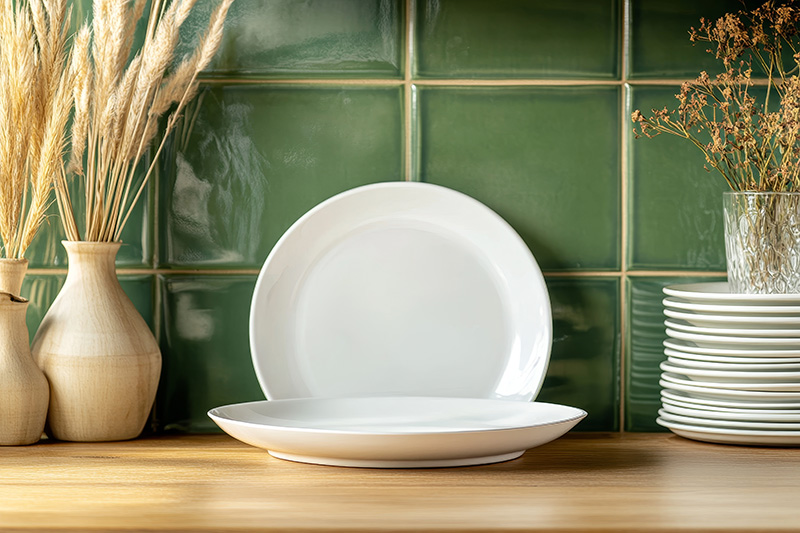
History
The stacked pattern gained popularity in minimalist and contemporary design movements. It strips away complexity in favor of bold repetition and symmetry, making it perfect for clean, modern interiors or as a backdrop to bolder features.
Description
This straightforward layout features tiles aligned directly on top of and beside each other, forming a perfect grid. It can be used with rectangular or square tiles, in either horizontal or vertical orientation depending on the desired effect.
Ideal Applications
- Modern bathrooms with floating vanities
- Full-height kitchen backsplashes with slab-style finishes
- Contemporary fireplaces or shower walls
Design Tip
Use vertically stacked tile in low-ceiling rooms to draw the eye upward and elongate the space. Consider textured or handmade tiles to soften the grid and avoid looking too clinical.
Ready to Elevate Your Home with Designer Tile Patterns?
From timeless herringbone to bold mosaic layouts, your tile pattern sets the tone for the entire space. Great Pyr Construction can help you navigate these options and install them with precision, care, and style that lasts for generations.
Reach out to us today to start your design consultation or schedule a custom tile installation with our expert team in Northern Michigan.

